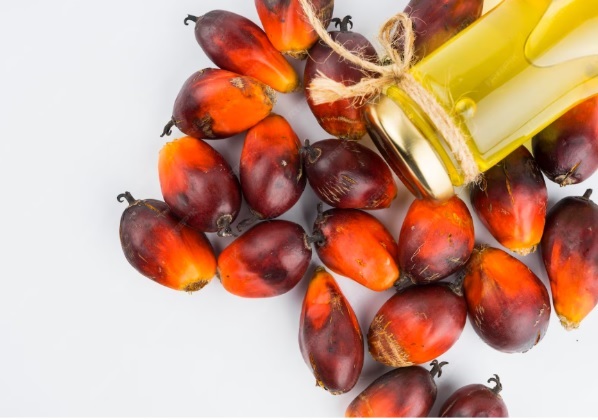
Source Image : Freepik
The palm oil industry is one of the main pillars of Indonesia’s economy. Its primary product, Crude Palm Oil (CPO), is not only used as a raw material for cooking oil but also for margarine, soap, cosmetics, and even biodiesel. With the growing global demand, CPO processing must be carried out using efficient and sustainable systems.
One critical aspect often overlooked is the pumping system. Pumps act as the heart of the CPO transfer process from production at the mill, storage in tanks, to loading onto vessels or tankers for distribution. Without the right pump, production flow can be disrupted, product quality may decline, and significant operational losses may occur.
This article will take a closer look at how the CPO loading process works, the types of pumps used, and the key factors in selecting pumps to support palm oil mill efficiency.
Unique Characteristics of Crude Palm Oil (CPO)
Before discussing pumps, it is important to understand the natural properties of CPO. Unlike water or other light liquids, CPO has specific characteristics that affect how it is transferred:
-
High Viscosity – At room temperature, CPO is relatively thick. Mills usually maintain CPO at a certain temperature to make it easier to pump.
-
Contains Solids – In the early stages of processing, CPO may still contain fibers, dirt, or fine sand that can damage pump components.
-
Sensitive to Contamination – CPO must remain hygienic, especially if intended for food-grade applications.
-
Continuous Operation – Palm oil mills typically run 24/7, requiring pumps that can operate reliably with minimal downtime.
These characteristics make pump selection for CPO particularly critical.
The CPO Loading Process in the Palm Oil Industry
Generally, CPO transfer consists of several stages:
-
Transfer from Clarification Station to Storage Tanks
After crude palm oil is separated from fibers and impurities, it is pumped into storage tanks where the temperature is maintained at around 50–60°C to keep it in liquid form. -
Circulation in Storage Tanks
Pumps help with internal circulation and agitation to prevent sedimentation and ensure the CPO remains homogeneous. -
Loading onto Ships or Tankers
This stage requires high-capacity pumps that can run for long periods with stable pressure. Loading usually takes place at specialized CPO terminals or ports. -
Unloading at the Destination Facility
Pumps are also required when transferring CPO from ships or tankers to receiving tanks.
Types of Pumps Used in CPO Loading
1. Gear Pump
Gear pumps are widely used for transferring viscous liquids such as CPO. They operate using two rotating gears that trap and push the fluid outward.
Advantages for CPO:
-
Can generate high pressure, ideal for long-distance transfers.
-
Provides stable and precise flow, ensuring product quality.
-
Available in both mechanical seal and mag-drive hygienic versions.
Limitations:
-
Not suitable if CPO contains high amounts of solids.
-
Requires lubrication from the fluid itself to prevent rapid gear wear.
Gear pumps are commonly used for internal plant transfer or pressurized pipeline distribution.
2. Air Operated Double Diaphragm (AODD) Pump
This pump type operates using compressed air instead of an electric motor. Fluids are moved by the reciprocating action of two diaphragms.
Advantages for CPO:
-
Self-priming and capable of dry-running without damage.
-
Resistant to slurry or CPO containing solid particles.
-
Hygienic variants (Saniflo) support food-grade standards.
-
Safe for use in explosive-risk areas since they do not use electric motors.
Limitations:
-
Requires an air compressor.
-
Energy consumption can be higher compared to electric pumps.
AODD pumps are widely used at loading/unloading stations due to their flexibility and ability to handle varying fluid conditions.
3. Centrifugal Pump
Centrifugal pumps are among the most common in industrial applications. They use a rotating impeller to generate flow and pressure.
Advantages for CPO:
-
High flow capacity, ideal for tank-to-tank transfer or ship loading.
-
Back pull-out design makes maintenance easier without dismantling the entire pipeline.
-
High efficiency for large volumes.
-
Can also be used for plant utilities such as cooling water or boiler feed.
Limitations:
-
Less effective for highly viscous fluids.
-
Requires relatively clean liquids to prevent impeller wear.
Centrifugal pumps are typically used in large-scale loading operations due to their ability to handle high flow rates.
4. Screw Pump (Sydex)
In addition to the pumps above, screw pumps are also widely used in CPO loading. With helical rotors, these pumps can transfer viscous liquids with minimal vibration.
Advantages for CPO:
-
Provides extremely stable flow.
-
Ideal for high-viscosity fluids.
-
Long service life with proper maintenance.
Screw pumps are often installed in CPO terminals for continuous high-capacity operations.
Pump Usage at Different Stages of CPO Loading
-
Internal Transfer Pumps: Gear pumps or screw pumps transfer CPO from clarification stations to storage tanks.
-
Circulation & Heating Pumps: Centrifugal or gear pumps maintain fluidity and prevent CPO solidification in tanks.
-
Loading/Unloading Pumps: AODD pumps for flexibility, or centrifugal pumps for large volumes depending on fluid conditions.
Key Factors in Selecting Pumps for CPO
-
Capacity & Pressure: Whether for long-distance transfer or fast loading.
-
Fluid Condition: Clean CPO or CPO with solids.
-
Energy Efficiency: Essential for long-term operations.
-
Maintenance & Downtime: Easy-to-service pumps reduce operational costs.
-
Hygiene Standards: Especially important for food-grade applications.
The CPO loading process requires the right pump solution at every stage. Gear pumps deliver precise flow for internal transfers, AODD pumps provide flexibility and safety, centrifugal pumps are ideal for large volumes, while screw pumps ensure stability with viscous fluids.
By understanding the roles and applications of each pump in CPO handling, companies can improve efficiency, maintain product quality, and reduce operational costs.
Winston Indonesia offers complete pump solutions for industrial needs. With product options from Liquiflo, Wilden, and Euroflo, we provide technical support, after-sales service, and expert consultation to ensure the success of your palm oil operations.



